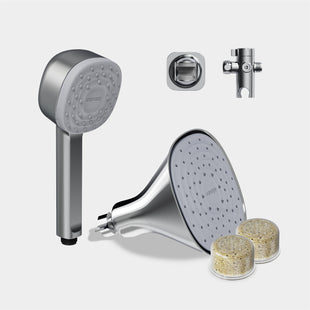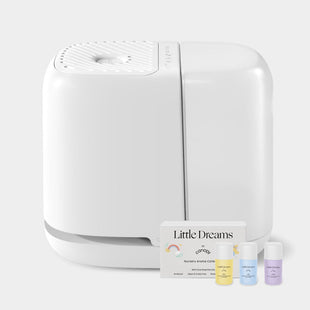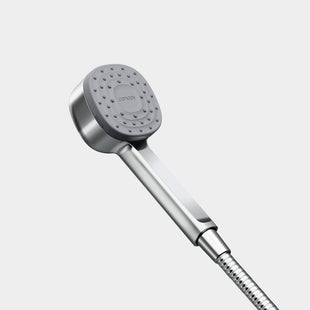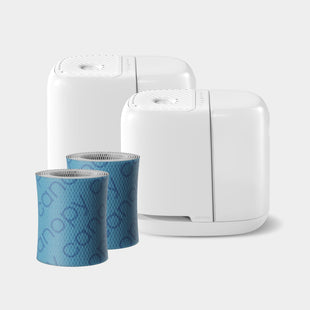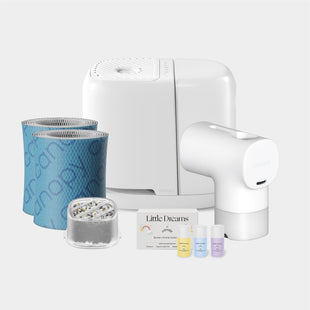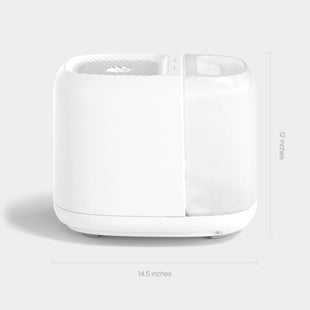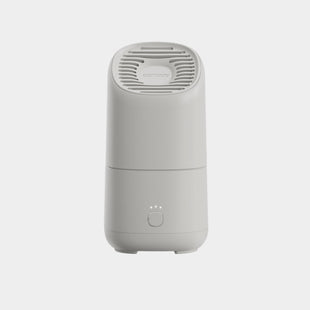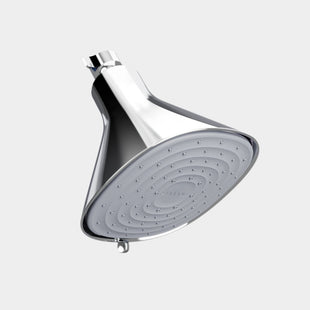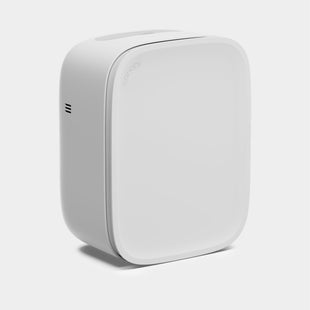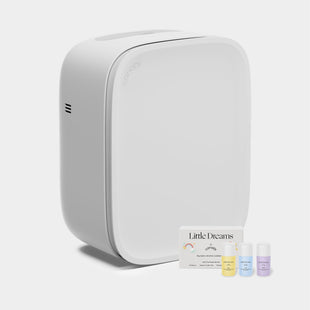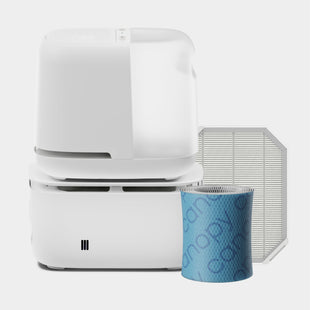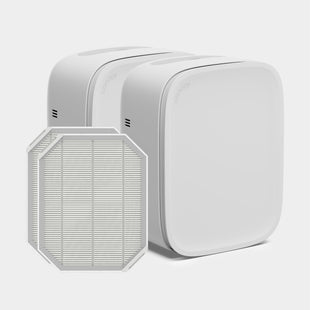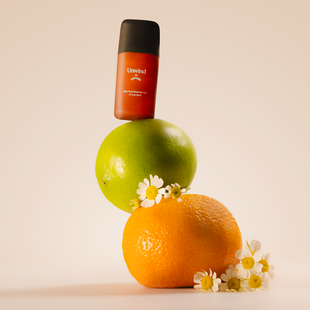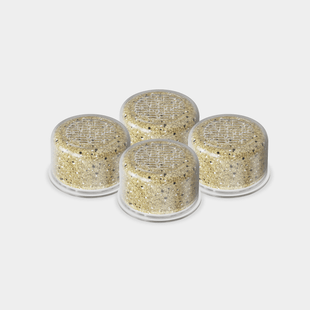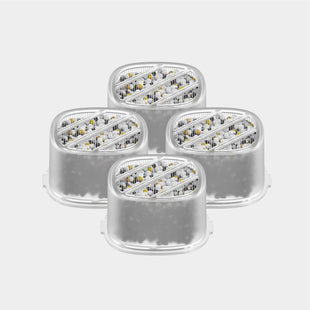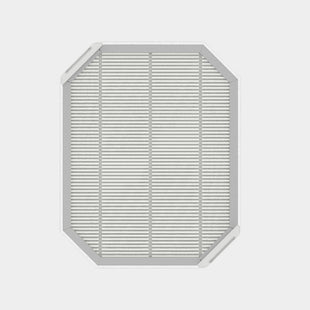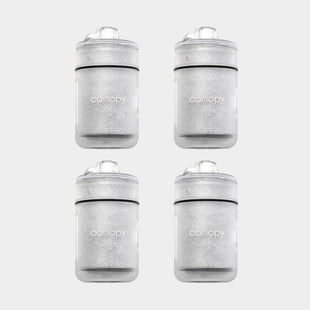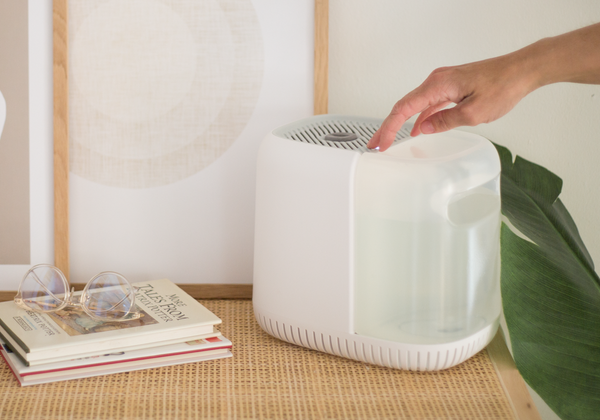Adding a humidifier to your home or office may very well be one of the best decisions you can make for your health (aside from a healthy diet and regular exercise, of course).
Humidifiers have a myriad of wellness benefits that may pique your interest including: improved skin health, restored hydration to dry or itchy scalp, reduced survival of airborne viruses, improved cold and flu symptoms, and many more.
As with any health or wellness purchase, it is important to do your research. To give you a kick-start, we compiled a few helpful bits of information:
- The different types of humidifiers
- Key differences between these types of humidifiers
- Features you should consider when choosing a model
Now, let’s talk humidifiers!
Types of Humidifiers
There are two primary categories of humidifiers: cool mist and warm mist. Sounds simple enough, right?
Cool Mist
Cool mist humidifiers diffuse water vapor into the air in two different ways: through the use of a metallic diaphragm (called an “ultrasonic” humidifier) or a fan (called an “evaporative” humidifier).
Ultrasonic Humidifier
An ultrasonic humidifier releases cool mist into the air by the vibration of a metallic diaphragm. This diaphragm moves at sonic speed to create water droplets that are blown out of the device with a fan. The result: cool, fine mist.

Evaporative
Evaporative humidifiers draw in air from the room and fan it through a moistened wick. The air that is blown back out into the room contains water droplets from the moistened wick and the result is released humidity.

Warm Mist
A warm mist humidifier releases heated water vapor into the air. The most popular type of warm mist humidifier is the steam based humidifier.
Steam Based Humidifier
Steam based humidifiers boil water to a fine vapor, which is then fanned out into the room. The result of a steam based humidifier is a warmed mist, which can slightly warm room temperatures.

Key Differences Between Humidifiers
Whether you prefer a cool, refreshing mist or a warm, comforting mist, the result is the same: increased humidity levels. There are, however, a few key differences between warm and cool mist humidifiers that are worth noting.
Room Temperature
While warm mist and cool mist humidifiers disperse an equal amount of humidity into a room, warm mist humidifiers tend to elevate room temperature. Warm mist humidifiers are often used during the winter months to increase both humidity levels and room temperature for heightened comfortability.
Energy Requirements
Cool mist humidifiers require less energy than warm mist humidifiers, which must boil water to trigger evaporation, and may be the more practical choice for energy efficiency.
How to Choose the Proper Humidifier
Now that you understand the difference between the types of humidifiers available for your personal use, how the heck do you go about actually choosing a humidifier? With a decent amount of options on the market, how do you make your selection?
A humidifier can make a huge difference to your health and general wellness if the model you choose meets your lifestyle criteria. There are a few key features that should factor into your humidifier purchase including: output capacity, maintenance requirements, and filter type.

Output Capacity
A few questions to guide your personal output requirements:
- In what room do you plan to place your humidifier?
- What is the square footage of that room?
- Where would you like to place your humidifier? On your nightstand? On a dresser?
Answering these questions will help to determine the output necessary to effectively humidify the room in which you plan to place your humidifier.
The optimal humidity for your home is between 40 and 60 percent. When choosing a humidifier, you want to select a model that has output equivalent to the square footage of your room. For example, if you have a 500 square foot bedroom, you want a humidifier with a 500 square foot output.
Proper output = optimal humidity. Optimal humidity = the healthiest you.
Cleaning & Care
Whether you have a jam-packed schedule with work, maybe a few kiddos running around, and errands up the wahzoo, or you created a more relaxed lifestyle with plenty of free time to for self-care and hobbies, you need a humidifier that aligns with your lifestyle.
A humidifier generally requires a regular maintenance routine in order to prevent the formation of bacteria, mold or “white dust” that accompany sitting water. With some models, you will need to wipe down your humidifier after each use and deconstruct your machine once per week for a thorough clean. This may sound like a breeze to you, or, you may need a device that is more conducive to a busy schedule.
If you need an easy-to-clean humidifier, you should look for models that have fewer water-exposed parts or dishwasher safe components that can wash while you conquer your day.
Filter Type
In the same vein as care requirements above, you need a filter that seamlessly fits your schedule. Before you make your purchase, make sure you are aware of the filter replacement frequency and have the capacity to commit to that filter replacement schedule.
If not replaced in accordance with the humidifier’s model requirements, you run the risk of releasing contaminated water into the air, which can cause flu-like symptoms if inhaled, especially if you suffer from asthma or severe allergies.


